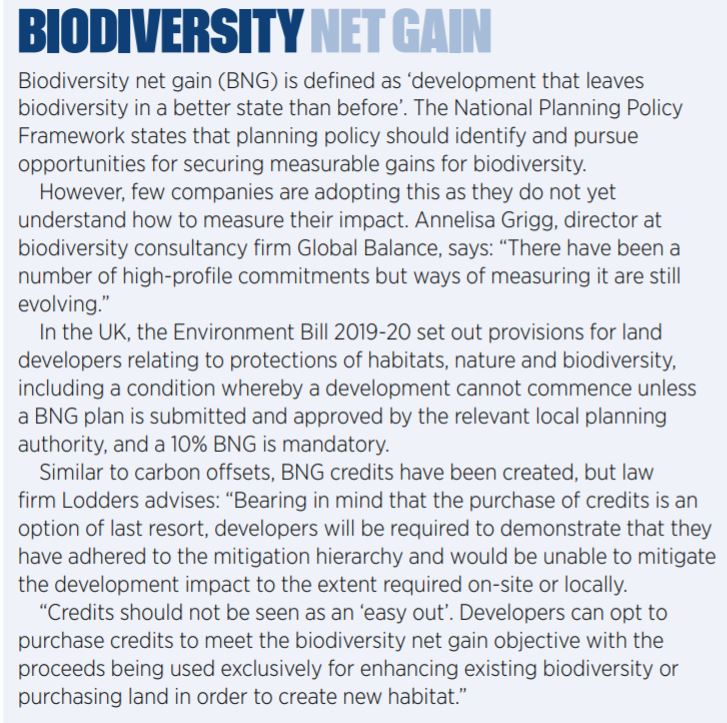“Humanity is waging a war on nature. This is suicidal. Making peace with nature is the defining task of the 21st century. It must be the top priority of everyone, everywhere,” said UN secretary-general António Guterres in a landmark speech to students at Columbia University last December.
High-profile figures such as Guterres are increasing awareness of biodiversity loss, though sadly, awareness is not enough. Threats to land and marine ecosystems as well as species populations are increasing exponentially. Since 1970, 32% of the world’s forest area has been destroyed, 85% of wetlands have been lost, 50% of the world’s coral reef systems have disappeared and there has been, on average, a 60% decline of vertebrate species, according to the World Economic Forum.
“We are losing our life support system,” says Eugenie Mathieu, senior impact analyst at Aviva Investors. “Scientists are calling this the ‘sixth great extinction’. The last was when the dinosaurs died out.”
For these reasons, biodiversity experts are calling on the investment industry to step up their commitment to natural capital through measurement of their company’s impact, mitigation of biodiversity loss and benefit from the upside opportunities associated with this ‘natural asset class’.
Tangible assets
According to Annelisa Grigg, director at biodiversity consultancy Global Balance and contributor to the creation of the Aligning Biodiversity Measures for Business Initiative, there are two ways to look at biodiversity: how companies are impacting it and how they are depending on it.
“Lots of companies are looking at the first but not so much the second, which has left them open to risks but also lots of overlooked opportunities, as it is only one part of the picture,” she says.
It can be extremely challenging to assess a company’s biodiversity dependency and impact, but also invest in a pure play that is mitigating biodiversity loss. There is a huge awareness problem.
“People are unaware of the negative implications to the environment and society, and therefore their investment portfolios, too,” comments Federated Hermes’ head of impact investing Ingrid Kukuljan. “Covid has pushed biodiversity forward as we have this increased awareness of human contact with wild animals due to deforestation, for example. Pandemics are one of the problems we are facing.”
But we come back to the issue of not having anything really tangible to measure and record, and investors can be far removed from the biodiversity a company in its portfolio has an effect on.
According to Henry Boucher, deputy chief investment officer at Sarasin & Partners: “If you asked a company how much it has relied on cows and land to make a product it wouldn’t really know. It just knows that it bought 50 tonnes of palm oil or soy beans.”
Fund selectors say though they are trying to measure their portfolios’ biodiversity exposure and impact, with a lack of common frameworks this is challenging.
Louisiana Salge (pictured), senior sustainability specialist at EQ Investors, explains: “We have been trying to get data on biodiversity but it’s not uniform enough for us to use.
“Governments would like to see companies reporting on biodiversity net gain (BNG) (see boxout) but not many are. We need everybody to be measuring their biodiversity impact, but it feels we are still very early days.”ESG

Natural integration
Despite the many deterrents such as a lack of data and disclosure, there are groups and teams finding ways to invest in nature and making a return.
On top of its own research, Aviva Investors uses rankings by NGOs such as CDP Forests and Water assessments, the WBA’s Sustainable Seafood Index, ZSL SPOTT, Forest 500, ChemScore and As You Sow Plastics rankings to identify a company’s biodiversity impact. Meanwhile, Sarasin & Partners’ Boucher flags NGOs’ estimates on raw material usage.
HSBC Global Asset Management’s Angus Parker, manager of its Global Equity Climate Change Fund, says he has identified three ways to incorporate biodiversity exposure into the portfolio: companies dedicated to plant-based protein and ingredient companies supporting these; companies offering meal kits so the right amount of food is used and little is wasted; and finally, companies investing in precision agriculture that uses sophisticated software to reduce the amount of fertilisers and pesticides that are used and achieve greater yields.
“We are most excited about companies that can both help to reduce the need for further land use change to feed human diets and improve farming practices to ensure a more harmonious relationship between agriculture and nature,” Parker says.
Reinforcing the message that investing in nature does have upside potential, Federated Hermes’ Kukuljan says: “It is tricky, but we can receive a return from nature.
“We do a lot of research on where companies need to reduce their impact on nature, restore and conserve biodiversity and then we find it is actually not di cult to make returns.”
Greener bonds
A number of ESG investors also point to green bonds as a way to access biodiversity.
“There are opportunities in government bonds and development bank bonds because the projects are directly investing in building out natural capital in line with government policies,” comments Rhys Petheram, head of environmental solutions at Jupiter.
Investments in biodiversity and sustainable land need the long-term backing that bond frameworks can offer and they fit well with their multi-sector approach. However, despite the record growth in the wider sustainable bond market, EQ Investors’ Salge says only 4% of green bond proceeds go towards biodiversity projects.
Previously, the team had accessed a green bond issued by the Conservation Fund, through its holding in the Wellington Global Impact Bond Fund in the EQ Positive Impact portfolios. However, the bond was removed from the fund recently, which Salge says is probably a result of reaching maturity, but hopes similar strategies will become more abundant.
Industry action
With more ways of accessing the natural asset class opening up, there are encouraging signs that groups are stepping up. For example, Federated Hermes and EQ Investors are among a number of firms that have earmarked biodiversity as an engagement priority for 2021.
In terms of legislation, 74 financial institutions including regulators and corporates have also partnered with various United Nations bodies and the World Wide Fund for Nature to form the Taskforce on Nature-related Financial Disclosures (TNFD). Complementing the Taskforce for Climate-Related Disclosures (TCFD), the group is working to come up with a framework for corporates to assess, manage and report on their dependencies and impacts on nature.
Some are hopeful with climate paving the way and the TCFD becoming mandatory in the UK, that we could see TNFD requirements sooner rather than later across Europe. In fact, France already requires financial institutions to disclose their strategy for reducing biodiversity impacts under its new Article 29.
“Climate change has woken us all up but has also created that framework,” according to Boucher. “After we have been asleep at the wheel for decades, it could take just another three years rather than three decades for us to wake up to biodiversity loss.”
Kukuljan adds: “Given the importance of biodiversity on the world, it should be made mandatory. We are hopeful that COP15 this year will result in a global accord that aligns with the Paris Agreement and pushes the biodiversity agenda forward.”
But until that happens, what can the finance industry be doing? It is important for asset managers to understand that measures taken to reduce greenhouse gas emissions are unlikely to benefit biodiversity in the same way, so nature-based solutions should be given equal consideration.
“We need the financial industry to step up on biodiversity. They are key participants in pushing this forward,” Kukuljan urges. “It would be a very good suggestion for companies to start looking at their basic impact to push the agenda forward.”
Aviva’s Mathieu and Jupiter’s Petheram agree COP15 may prompt more companies to carry out fuller assessments of their impacts on nature and they highlight industry collaboration as key. “Lots of asset managers are scrambling around to keep up with the climate side and jumping at every opportunity to get involved, so we should see this move on biodiversity across the industry,” Petheram says.
It feels like we are at a point where finance companies need to take that urgent next step in halting or reversing biodiversity loss by completely reassessing their interactions with nature and, maybe more importantly, setting targets to reduce their impact and become nature-positive. The alternative is unthinkable.
This article is taken from the May 2021 issue of Portfolio Adviser sister title ESG Clarity. Read more here.







